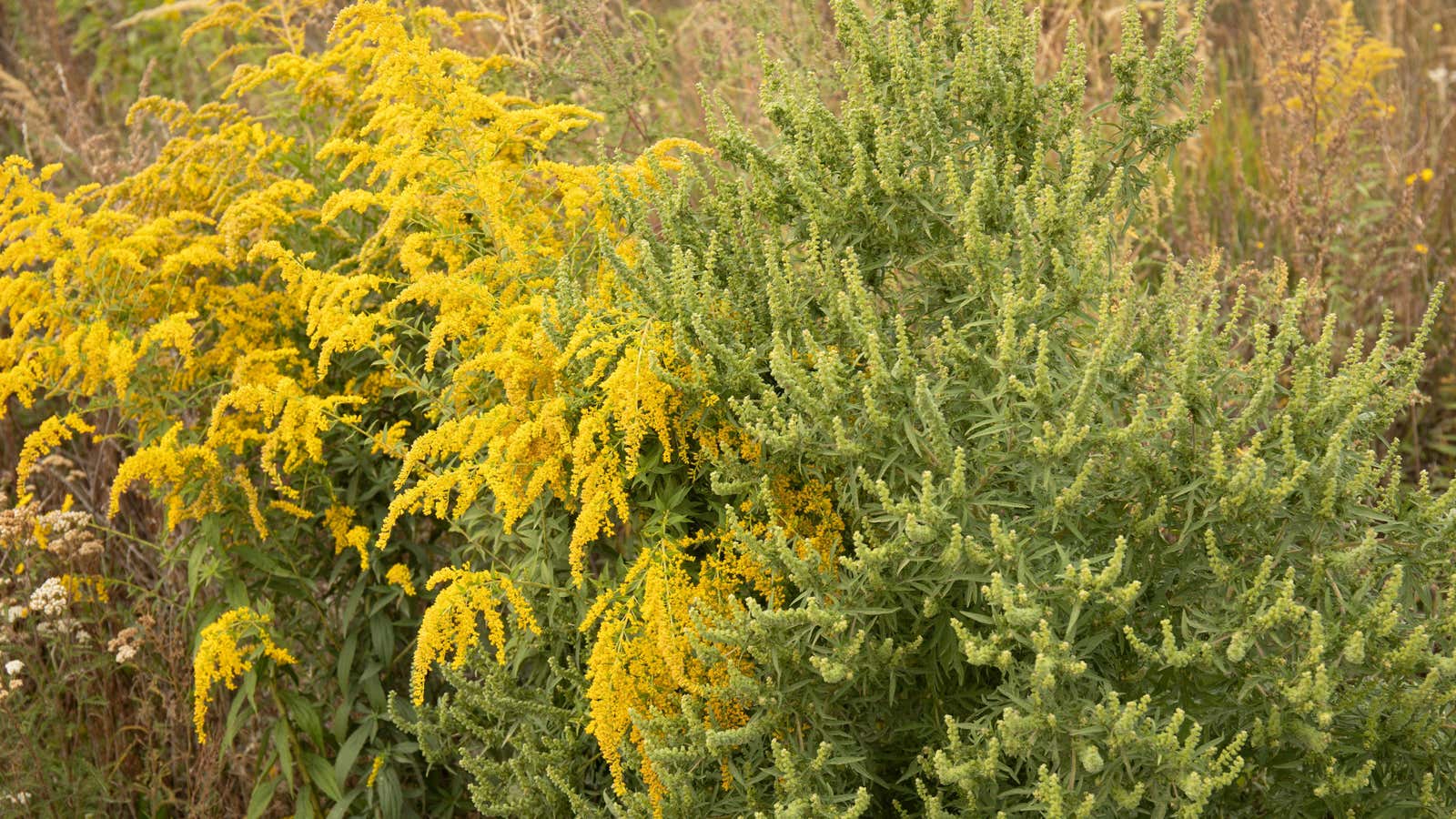Difference Between Ragweed and Goldenrod and What It Means for Your Allergies

There has been a lot of talk about the healing powers of nature – between swimming in the woods, fresh air and all kinds of “wellness” retreats – but people with hay fever may have a slightly different attitude to outdoor activities. Namely: it can be difficult to truly appreciate nature when there is too much of it in your eyes (and not because you are so moved by its beauty).
Now that allergy season is in full swing, it’s time to take a look at the two plants that are responsible for most of the blame when it comes to hay fever symptoms: ragweed and goldenrod. But what is the difference between them and which one do you most often get allergic to? Here’s what you need to know.
What is the difference between ragweed and goldenrod?
First, let’s start with what these two plants have in common. Both ragweed and goldenrod grow in the same areas, are about the same size, are part of the Asteraceae family , and bloom between July and October, according to Nicole Shein’s article on BobVila.com .
And now about the differences:
Ambrosia
- Annual plant
- Invasive species
- Small green inflorescences
- Pollinated by the wind
- Fern-like leaves measuring 6 by 4 inches.
Goldenrod
- Perennial
- Non-invasive species
- Big yellow flowers
- Pollinated by animals
- Can grow up to 3 or 4 feet in height
Am I allergic to ragweed or goldenrod?
Ultimately, you are much more likely to be allergic to ragweed than to goldenrod (although it is technically possible that goldenrod is an allergen for some). “This is because it is pollinated by bees and butterflies; its large pollen particles rarely get into the air at all, let alone travel any distance from the plant, ” Shein writes .
According to the Asthma and Allergy Foundation of America , about 15% of Americans are allergic to ragweed .